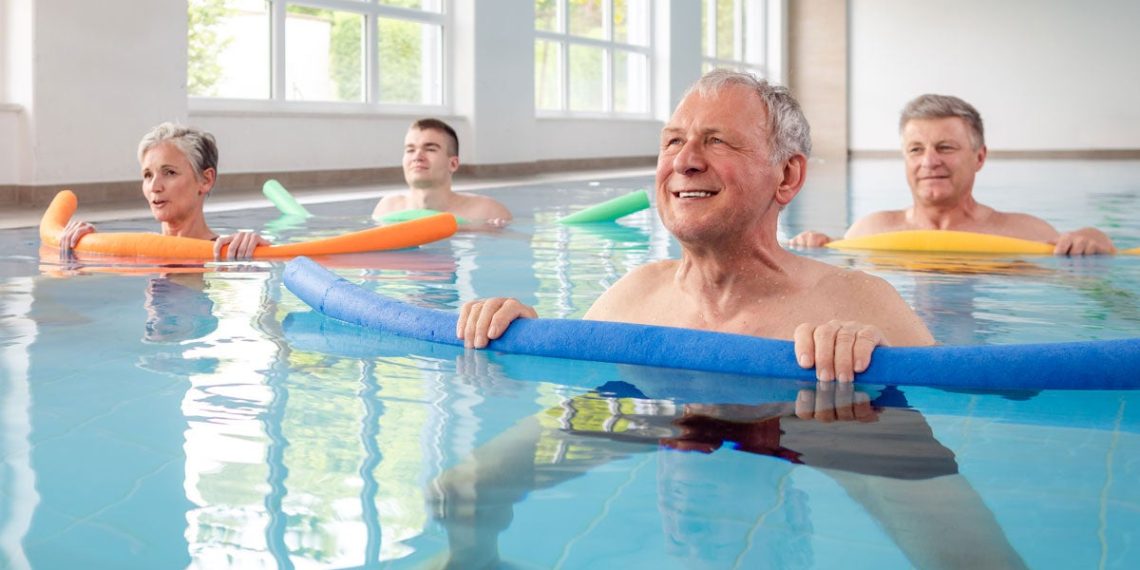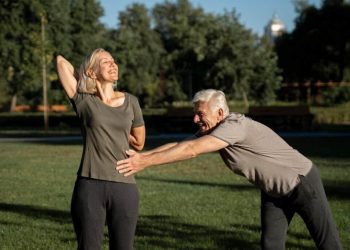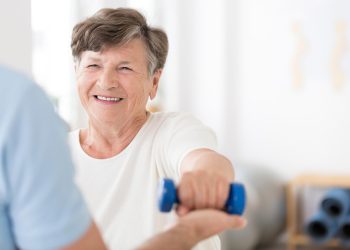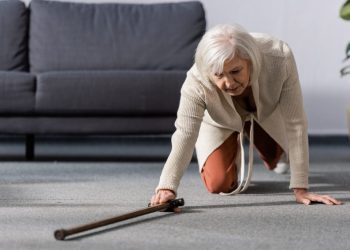Maintaining an active lifestyle is essential at every stage of life, but it becomes particularly crucial during our senior years. Regular physical activity can help older adults maintain independence, prevent chronic diseases, improve mental health, and enhance overall quality of life. The good news is that it’s never too late to start, and there are numerous fitness activities specifically suited to the needs and abilities of seniors.
Why Senior Fitness Matters
As we age, our bodies undergo natural changes that can affect strength, flexibility, balance, and endurance. However, regular physical activity can slow or even reverse some of these changes. Research consistently shows that seniors who engage in regular exercise experience better cardiovascular health, stronger bones, improved cognitive function, and reduced risk of falls. Exercise also plays a vital role in managing chronic conditions such as arthritis, diabetes, and heart disease, while contributing to better sleep, mood, and social connections.
The Centers for Disease Control and Prevention recommends that older adults get at least 150 minutes of moderate-intensity aerobic activity per week, along with muscle-strengthening activities on two or more days. However, any amount of physical activity is better than none, and seniors should work with healthcare providers to determine appropriate fitness goals based on their individual health status and abilities.
Walking: The Foundation of Senior Fitness
Walking stands as one of the most accessible and beneficial exercises for seniors. It requires no special equipment beyond comfortable shoes, can be done almost anywhere, and easily adapts to different fitness levels.
Benefits of Walking: Walking provides comprehensive health benefits including improved cardiovascular fitness, stronger bones, better balance, and weight management. It helps reduce the risk of heart disease, stroke, and type 2 diabetes while strengthening leg muscles and improving endurance. Regular walking also supports mental health by reducing symptoms of depression and anxiety, and it provides opportunities for social interaction when done with friends or walking groups.
Getting Started with Walking: Begin with short distances at a comfortable pace, perhaps just 10-15 minutes initially. Gradually increase duration and intensity as fitness improves. Invest in proper footwear with good arch support and cushioning to protect joints. Choose safe walking routes with even surfaces, good lighting, and minimal traffic. Consider using walking poles for additional stability and upper body engagement. Many seniors find that walking with a friend or joining a walking group provides motivation and accountability while making the activity more enjoyable.
Tai Chi: Ancient Wisdom for Modern Wellness
Tai chi, often described as “meditation in motion,” has emerged as an ideal exercise for seniors. This ancient Chinese martial art involves slow, flowing movements combined with deep breathing and mental focus.
Benefits of Tai Chi: Tai chi offers remarkable benefits for seniors, particularly in improving balance and preventing falls—a leading cause of injury among older adults. Studies have shown that regular tai chi practice can reduce fall risk by up to 45%. The gentle, low-impact movements improve flexibility, muscle strength, and joint mobility without placing excessive stress on the body. Tai chi also enhances mental clarity, reduces stress, and can help manage symptoms of arthritis, fibromyalgia, and Parkinson’s disease. The meditative aspects promote relaxation and may improve sleep quality.
Getting Started with Tai Chi: Look for classes specifically designed for seniors at community centers, senior centers, YMCAs, or fitness studios. Many instructors offer beginner sessions that teach basic movements and principles. Tai chi can be practiced while standing or seated in a chair, making it accessible for various ability levels. Classes typically last 45-60 minutes and provide social interaction alongside physical activity. Online videos and tutorials are available for home practice, though learning from a qualified instructor initially ensures proper form and technique. Wear comfortable, loose-fitting clothing and flat, flexible shoes.
Water Aerobics and Swimming
Aquatic exercise provides an excellent option for seniors, particularly those with arthritis, joint pain, or mobility limitations. The buoyancy of water reduces stress on joints while providing natural resistance for muscle strengthening.
Benefits: Water-based activities improve cardiovascular fitness, muscle strength, and flexibility with minimal impact on joints. The water’s resistance helps build strength without requiring weights, while the cooling effect prevents overheating during exercise. Many seniors find they can move more freely in water than on land, allowing for a fuller range of motion. Swimming and water aerobics also improve lung capacity and circulation.
Getting Started: Check local pools for senior-specific aquatic classes. Many facilities offer shallow-water and deep-water options to accommodate different comfort levels. You don’t need to be a strong swimmer to participate in water aerobics, as most classes take place in shallow water. Consider private lessons if you’re uncomfortable in water or want to learn proper swimming techniques.
Strength Training
Resistance training is crucial for maintaining muscle mass, bone density, and metabolic health as we age. Contrary to common misconceptions, seniors can safely engage in strength training with proper guidance.
Benefits: Regular strength training combats age-related muscle loss (sarcopenia), maintains bone density to prevent osteoporosis, improves metabolism, and enhances the ability to perform daily activities like carrying groceries or climbing stairs. It also supports joint health and can reduce arthritis symptoms while improving posture and balance.
Getting Started: Begin with light weights, resistance bands, or bodyweight exercises under professional guidance. Many senior centers and gyms offer strength training classes designed for older adults. Focus on major muscle groups including legs, hips, back, chest, shoulders, and arms. Start with one or two sets of 10-12 repetitions, resting between exercises. Proper form is more important than the amount of weight lifted. Working with a certified personal trainer experienced in senior fitness can ensure safe and effective technique.
Yoga for Seniors
Yoga combines physical postures, breathing exercises, and meditation to promote overall wellness. Chair yoga and gentle yoga classes make this practice accessible to seniors of all abilities.
Benefits: Yoga improves flexibility, balance, and strength while reducing stress and promoting relaxation. It enhances body awareness and breathing capacity, supports better sleep, and can help manage chronic pain. The mindfulness aspects of yoga contribute to improved mental health and emotional well-being.
Getting Started: Look for classes labeled “gentle yoga,” “senior yoga,” or “chair yoga.” These modifications make poses accessible while maintaining benefits. Inform instructors of any physical limitations or health conditions. Use props like blocks, straps, and blankets to support your practice. Practice patience with yourself—yoga is not competitive, and everyone progresses at their own pace.
Cycling and Stationary Biking
Cycling, whether outdoors or on a stationary bike, provides excellent cardiovascular exercise with less impact on joints compared to activities like jogging.
Benefits: Biking strengthens leg muscles, improves cardiovascular health, and enhances coordination and balance. It’s easier on knees and hips than high-impact activities while still providing an effective workout. Stationary bikes offer the added benefit of safety and convenience, allowing exercise regardless of weather conditions.
Getting Started: For outdoor cycling, ensure your bike is properly fitted and in good working condition. Wear a helmet and choose safe routes with bike lanes or minimal traffic. Stationary bikes at gyms or home offer a controlled environment with adjustable resistance. Recumbent bikes provide additional back support and may be more comfortable for some seniors.
Safety Considerations and General Tips
Before starting any fitness program, consult with your healthcare provider, especially if you have chronic conditions or haven’t been regularly active. Start slowly and progress gradually to avoid injury and discouragement. Stay hydrated before, during, and after exercise, and be aware of weather conditions when exercising outdoors.
Listen to your body and distinguish between normal exertion and pain that signals a problem. Stop exercising if you experience chest pain, severe shortness of breath, dizziness, or unusual discomfort. Warm up before activities and cool down afterward with gentle stretching.
Consider exercising with a buddy for motivation, safety, and social connection. Keep a simple log of your activities to track progress and maintain motivation. Remember that consistency matters more than intensity—regular, moderate exercise provides more benefits than occasional intense workouts.
Senior fitness encompasses a rich variety of activities that can be tailored to individual abilities, preferences, and health conditions. Whether you’re drawn to the gentle flowing movements of tai chi, the simplicity of walking, the social atmosphere of water aerobics, or the strengthening benefits of resistance training, the key is finding activities you enjoy and will continue doing regularly.
The journey to improved fitness doesn’t require perfection—it requires persistence. Every step taken, every stretch completed, and every class attended contributes to better health, greater independence, and enhanced quality of life. Remember that it’s never too late to start, and even small increases in physical activity can yield significant health benefits. Embrace movement as a gift you give yourself, and discover the joy and vitality that come from staying active throughout your senior years.






